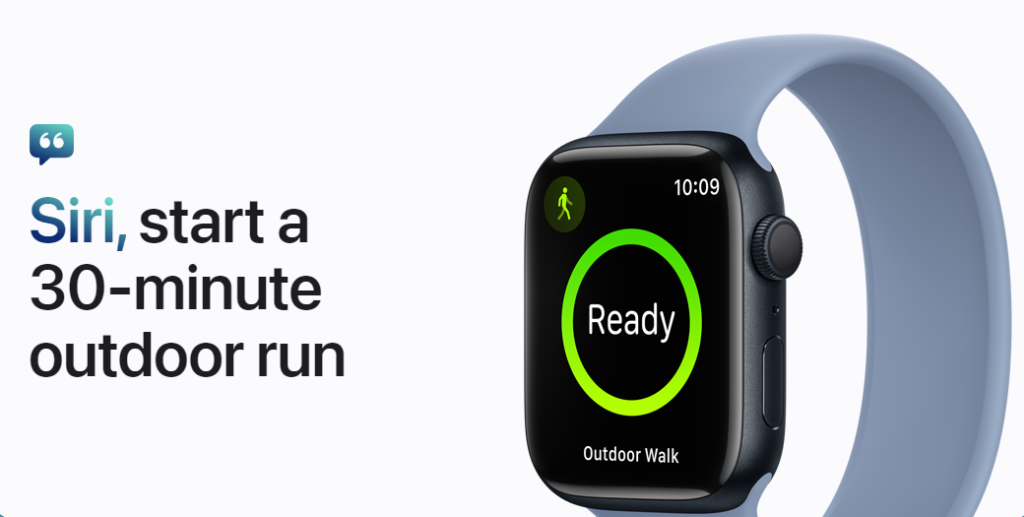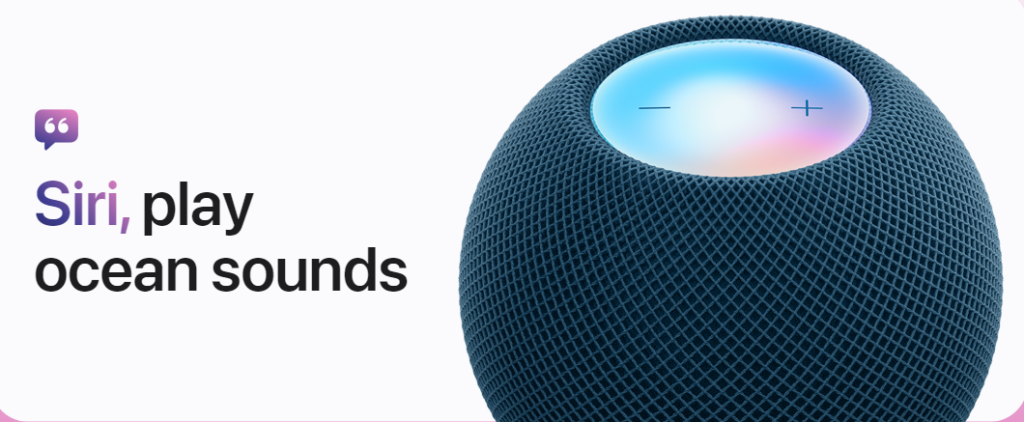Apple’s most well-known AI is called Siri, your helpful digital assistant that lives on your iPhone, iPad, Mac, and other Apple devices. However, it’s important to remember that Apple integrates various AI technologies across its products and services, not just under the “Siri” name. So, while Siri is the face of Apple’s AI, there’s a whole world of machine learning powering your Apple experience behind the scenes.

💡How Siri Works
👉Step 1. Listening and Understanding
When you say “Hey Siri” or activate it manually, Siri uses speech recognition technology to convert your spoken words into text. This technology, trained on extensive datasets, helps Siri understand various accents and background noises.
👉Step 2. Decoding Your Request
Once Siri has your speech as text, it moves on to Natural Language Processing (NLP). This step involves figuring out the meaning behind your words. For example, if you say, “Remind me to buy groceries,” Siri identifies that you want to set a reminder for buying groceries.
👉Step 3. Making Decisions
With your request understood, Siri then decides how to respond. Whether it’s sending a message, playing music, or checking your calendar, Siri can handle a variety of tasks. It works with Apple’s apps and integrates with third-party apps through SiriKit, allowing it to perform many different functions.
👉Step 4. On-Device Processing
A lot of Siri’s work is done on your device thanks to the Apple Neural Engine. This chip speeds up processing and ensures that Siri can handle requests quickly and even work offline. For instance, the ANE in the latest iPhone models performs billions of operations per second, making Siri more responsive.
👉Step 5. Learning and Personalizing
Siri uses machine learning to improve over time. By learning from your interactions, it gets better at predicting what you might need. For example, if you regularly ask Siri to play workout music, it will start suggesting similar music automatically, making your experience more personalized.

📊Siri by the Numbers
- 500 million: Siri is used on over 500 million devices worldwide.
- 1.5 billion requests: Siri processes more than 1.5 billion queries per week.
- 5 billion responses: Siri handles 5 billion responses every month, indicating its extensive usage.
Siri Handle Tasks On the Go
Siri is perfect for managing tasks when you’re on the move. Whether you’re busy with chores or juggling multiple activities, Siri can handle various requests. For example, if you’re driving, you can use Siri to set reminders, send texts, or even find where you parked your car. You can issue follow-up commands without needing to reactivate Siri, making it incredibly efficient.
- Set Reminders: “Siri, remind me to water the plants when I get home.”
- Send Messages: “Siri, text Rigo, ‘I’m on my way.’”
- Find Parking: “Siri, where did I park my car?”

🚗Drive Safely with Siri
When driving, Siri enhances your safety by allowing you to control various functions using voice commands. With CarPlay, you can get directions, make phone calls, and share your estimated arrival time—all while keeping your eyes on the road. This hands-free capability is designed to minimize distractions and ensure a safer driving experience.
- Get Directions: “Siri, give me directions home.”
- Make Calls: “Siri, call Vivian Chou.”
- Share ETA: “Siri, share my ETA with Antonio.”

🚒Stay on Track During Workouts
Siri is also a great workout companion. It helps you stay focused and motivated by allowing you to control your workout sessions and music playlists without interrupting your exercise routine. Additionally, Siri can read out texts, so you stay updated even when you’re in the middle of a workout.
- Start Workouts: “Siri, start a 30-minute outdoor run.”
- Play Music: “Siri, play something upbeat.”
- Read Messages: “Siri, Cami said, ‘Okay, see you soon!’”

🧑🍳Effortless Kitchen Assistance
In the kitchen, Siri’s capabilities shine. You can set timers, convert measurements, and even use Intercom on HomePod to communicate with family members—all without touching your device or getting it messy. This makes multitasking while cooking much more manageable.
- Set Timers: “Siri, set a pizza timer for 12 minutes.”
- Convert Measurements: “Siri, how many tablespoons are in one-quarter cup?”
- Use Intercom: “Siri, intercom to Daniel’s room, ‘Dinner’s ready.’”

Unwind and Relax
After a long day, Siri helps you wind down by managing your relaxation routine. You can set alarms, adjust lighting, and play calming music—all with voice commands. Siri’s ability to handle these tasks ensures that you can relax and enjoy your downtime without additional hassle.
- Play Music: “Siri, play ocean sounds.”
- Check Weather: “Siri, what will the weather be like tomorrow?”
- Set Alarms: “Siri, set an alarm for 8 AM.”
- Adjust Lighting: “Siri, dim the lights.”
- Start Mindfulness: “Siri, start Mindfulness.”
Privacy First
Siri prioritizes your privacy with robust security measures. Siri’s interactions are processed using the Apple Neural Engine, ensuring that your voice data remains on your device unless you choose to share it. This on-device intelligence not only makes Siri more responsive but also maintains your privacy, as your interactions are not linked to your Apple ID or shared with advertisers.
Explore more about Siri and its capabilities to see how it can make your life easier and more connected while keeping your information private and secure.
Apple’s Future AI Ambitions
Though Siri is at the forefront of Apple’s AI for consumers, the company’s ambitions stretch further. Apple continually advances its AI capabilities across health, finance, and augmented reality (AR). For example, the Apple Watch uses AI to monitor heart health and detect irregular rhythms, while Apple Pay employs AI to detect fraudulent transactions. Additionally, Apple’s ARKit powered by machine learning, offers developers powerful tools to build AR experiences that interact seamlessly with the real world.
While companies like Google and OpenAI have made headlines with their AI advancements, Apple’s approach is different. It is focused on embedding AI deeply into the user experience while prioritizing privacy and security. Unlike other AI models that rely heavily on cloud processing, Apple emphasizes on-device intelligence to minimize data collection and ensure user privacy.
As of 2023, 86% of users report satisfaction with Siri, and Apple is investing heavily in making Siri even more intuitive and responsive. The company focuses on advancing machine learning models, improving conversational AI, and integrating new AI-driven features across its products.
Conclusion
Siri may be the most familiar face of Apple’s AI, but the company’s innovations in machine learning, on-device intelligence, and NLP are shaping the future of technology. From personalized experiences to enhanced privacy, Apple is committed to embedding AI into every part of the user journey, continually improving the tools and services that define the Apple ecosystem.
For further exploration of this exciting frontier, follow AI-powered SEO on LinkedIn.









